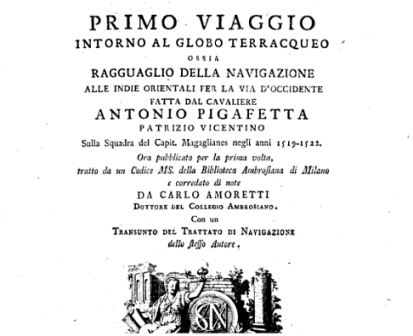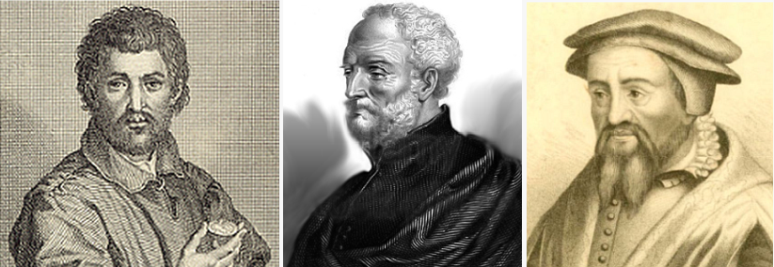Last March 25, a week before the nation was to mark the 500th year of its birth as a Christian nation, this column started this plain layman’s chronological review of Philippine history to look into how the island of Limasawa came to be recognized by the national government and the country’s church authorities as the site of the first Holy Mass in our archipelago.
This evident distortion of Philippine history obviously can’t be trifled with, for Limasawa is an island that neither figured nor had ever been named or mentioned in a history book or extant document anywhere for 142 years after that first Mass. This island managed to displace the island of Mazaua as the site of that first Mass for no discernible reason other than the seeming hubris, confusion, or wrongheaded predisposition of ill-informed historians, religious missionaries, and travel writers during the past 400 years.
In Part 7 of our chronological review last week, we revisited the year 1524 and looked more closely at how Maximilianus Transylvanus, the courtier and personal secretary to the Roman Emperor King Charles V of Spain, was very much in a hurry to overtake the Venetian chronicler Antonio Pigafetta in getting a book published about the historic first circumnavigation of the world. To achieve that goal, Transylvanus composed his tract
“De Moluccis Insulis” barely 45 days upon Pigafetta’s return from the Moluccas, freely appropriating the latter’s chronicles for his own first-person account of the Magellanic voyage.
Transylvanus had correctly identified Massana (Mazaua) as the island where Magellan’s fleet dropped anchor after a storm had serendipitously driven it off course, but he stopped right there. Then he chopped off from Pigafetta’s chronicles no less than 20 days—about 5,000 words in the English translation—of Magellan’s sojourn in Mindanao. Evidently, Transylvanus found no significance nor historic value in the first Easter Sunday Mass that was officiated in Mazaua, nor in the planting of the First Cross in the nearby mountain to signify the birth of a new Christian nation.
The haste with which Transylvanus had moved his narrative from Mazaua to Subuth (Cebu)—literally in the blink of an eye—would have serious negative consequences on his historiography. Even so, with his deft self-promotion and many contacts in royal circles and in publishing, there was no stopping
“De Moluccas Insulis” from becoming an influential bestseller in European capitals for several decades.
Among his close associates was Italian geographer and travel writer Giovanni Battista Ramusio, who as noted in Part 4 of this chronological review wrote a highly laudatory introduction for Transylvanus’ bestselling book
“De Moluccis Insulis.” In 1536 or 14 years later, an Italian translation of Pigafetta’s Magellanic chronicles from an unknown original manuscript was anonymously published in Venice. Evidently to skirt Pigafetta’s subsisting 20-year copyright for his chronicles that lasted until 1544, the translation likewise did not carry the printer’s name and place of publication. However, the 1563 edition of that translation finally carried Ramusio’s name as its translator.
In that pirate Italian translation of Pigafetta’s chronicles, the locality of the Magellanic sojourn got even more garbled. It did restore the first Holy Mass episode but instead of it getting celebrated in the island of Mazaua, this Italian translation moved it to the “island of Butuan” on Easter Sunday, March 31, 1521. From there, Magellan’s fleet sailed for Cebu passing “Zeilon, Bohol, Messana...”
With such errors of time, place, and circumstance in the writing or translation of world history, it should be no cause for surprise why it has become a never-ending enterprise for historians and nonhistorians alike to try to make sense of bungled history or to keep it that way—like where the first Mass in our archipelago really took place in 1521.
PHOTOGRAPHIC SIDEBAR


HOW MAZAUA GOT DISPLACED BY AN IMAGINED, NONEXISTENT ISLAND AS THE SITE OF THE FIRST HOLY MASS IN THE PHILIPPINE ARCHIPELAGO.
The first Holy Mass was held in the port-island of Mazaua in the Mindanao landmass on March 31, 1521 as duly recorded by Magellanic Expedition chronicler Antonio Pigafetta (above photo, left) in his own manuscript of the voyage chronicles to the Moluccas, which got inexplicably sidetracked and would remain unpublished, vanishing completely for almost 400 years until the Augustinian priest Carlo Amoretti just chanced upon it in a Milan library storeroom in 1797. But Maximilianus Transylvanus (leftmost, row of photos below), an ambitious royal courtier who was also a personal secretary of the Roman Emperor King Charles V of Spain, was such in a great hurry in 1522 to beat Pigafetta in getting the distinction of being first to publish a book about the fleet's astounding feat of the first circumnavigation of the world. So, while Pigafetta was away in Rome for a few months doing papal duty, Transylvanus freely appropriated Pigafetta's chronicles for “De Moluccas Insulis,” his own first-person account in Latin of that voyage. With his deft promotion as sole author, it became a bestseller and remained so for many decades despite its very serious lapses in historiography. It eliminated altogether the 20-day sojourn of Magellan in Mindanao during which the historic first Easter Sunday Mass was held in Mazaua. Transylvanus chopped off about 5,000 words from the English translation of Pigafetta’s chronicles of that Mindanao sojourn, making no mention at all of that historic first Easter Sunday Mass in Mazaua that marked the birth of the first Christian nation in the archipelago. This grave lapse in historiography would continue to confound world historians and has particularly kept Philippine historians and the Roman Catholic clergy at loggerheads against one another from the early 1900s until today.

In 1550, Giovanni Battista Ramusio (center in above row of photos) retranslated into Italian Jacques Fabre’s 1525 French translation of Pigafetta’s travel diary. In that retranslation, Ramusio replaced “Messana” (Mazaua) with “Buthuam” as the first Mass site, then added that Magellan had sojourned in Butuan. He reportedly attributed having to retranslate his first Italian translation of the Pigafetta text to his having worked on a Fabre translation in French that was just a brief summary in Italian of the Magellanic voyage story. Twenty years earlier, the Italian historian Peter Martyr d’Anghiera (rightmost, row of photos above), came out with his Latin-language book “De Orbe Novo” (On the New World) that included an account of the Magellanic voyage based on “Le voyage et nauigation,” a 1525 French translation of Pigafetta's chronicles. This translation was presumed to be that of Jacques Fabre, who, as noted in Part 1 of this chronological review, had been commissioned to do it by the Queen Regent of France. In the year 1555, Richard Eden’s English translation of this work of Peter Martyr was published in London. In that English version, Pigafetta was quoted narrating in the first-person that Magellan’s fleet anchored in Butuan on March 28, 1521 where an Easter Sunday Mass was officiated three days later; this was at variance with Pigafetta's account that the anchorage took place in the port-island of Mazaua.
(Next:
Getting our history right after 500 years – Part 9) May 20, 2021
This essay, 2,045th of the series, appeared in the column “English Plain and Simple” by Jose A. Carillo in the Campus Press section of the May 13, 2021 Internet edition of The Manila Times
,© 2021 by the Manila Times Publishing Corp. All rights reserved. Read this article online in
The Manila Times:
“Getting our history right after 500 years - 8”To listen to the audio version of this article, click the encircled double triangle logo in its online posting in
The Manila Times.